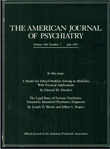Images in Neuroscience: Brain Development, I: The Neural Plate
There is increasing evidence that abnormalities in the development of the brain either predispose to or directly cause certain psychiatric disorders. It is not surprising that childhood disorders such as autism are caused by neurodevelopmental abnormalities; but disorders that have their onset during or after adolescence may also be influenced by in utero developmental abnormalities. This creates a compelling rationale for behavioral scientists and clinicians to understand the basic mechanisms that regulate the assembly of the brain.
Early CNS development involves an ordered sequence of inductive processes beginning with the formation of the neural plate, followed by a hierarchical series of inductions that lead to regionally distinct developmental programs within the neural plate. Inductive processes characteristically involve two tissues: one tissue is the target, and the other (called the organizer) produces the molecular signals (proteins) to effect the induction. Early induction of the neural ectoderm leads to formation of the neural plate, which gives rise to the whole CNS (left figure). Thereafter, regional restricted, inductive processes subdivide the neural plate into molecularly distinct domains, primordia of the major brain subdivisions.
The process of regionalization subdivides the CNS into primordia of its major structures (e.g., neocortex, striatum, thalamus, cerebellum) and initiates within these primordia their genetic programs of histogenesis (neuronal proliferation and differentiation (right figure). The mechanisms underlying the ultimate decision of cellular fate involve the interaction of both intrinsic cellular signals (e.g., transcription factors) and extrinsic signals (e.g., growth factors). Interaction of these processes in the CNS determines a cell's type.
Many aspects of neuronal development continue during postnatal life. Continued elaboration and refinement of neuronal connections, synaptic connectivity, and neuronal and glial genesis are examples. Postnatally, experience-driven influences gain importance in molding the structure and function of the CNS. Postnatal development involves the melding of genetically driven events with those influenced by experience. CNS development is an early and lifelong process requiring a precise order of events to occur at particular times, depending on genetic, molecular, and environmental factors.
Address reprint requests to Dr. Tamminga, Maryland Psychiatric Research Center, P.O. Box 21247, Baltimore, MD 21228. Figure courtesy of Dr. Rubenstein.




